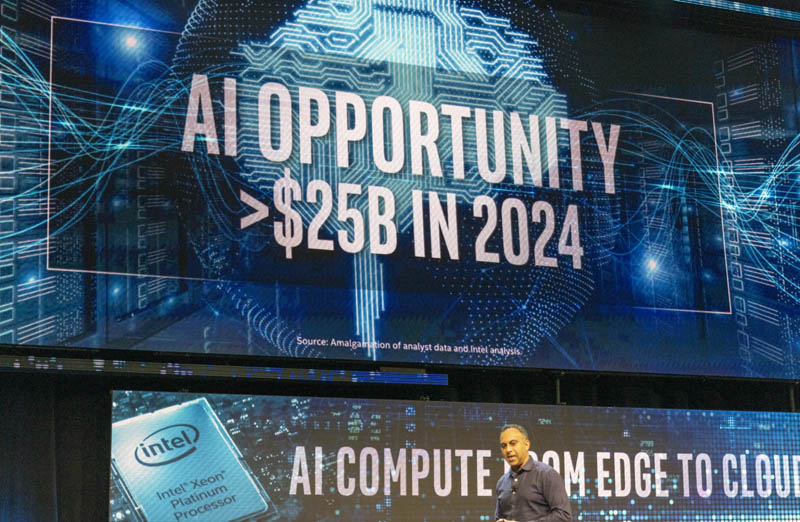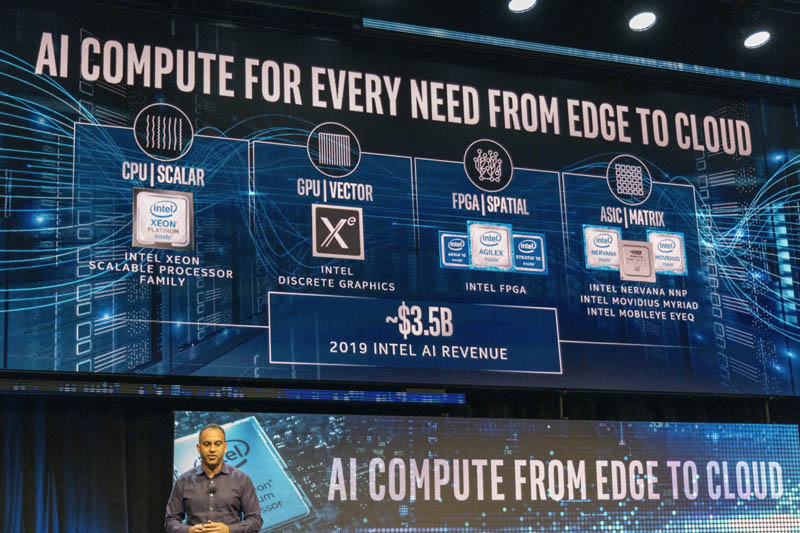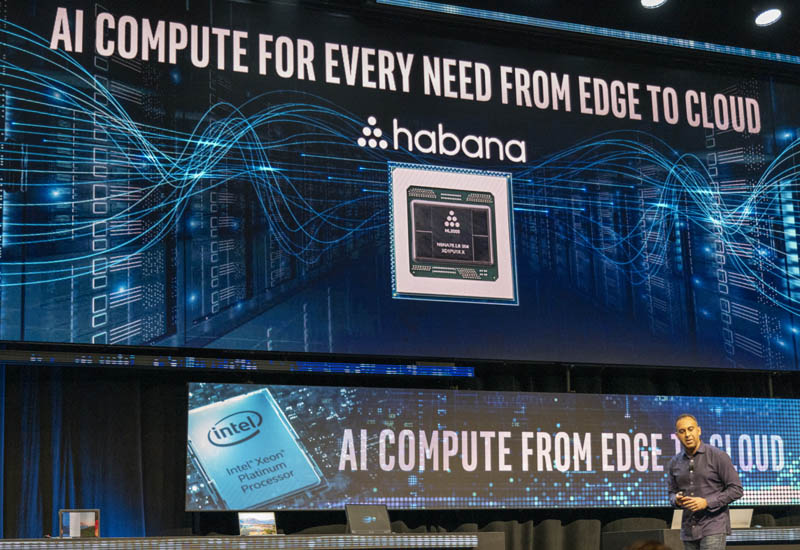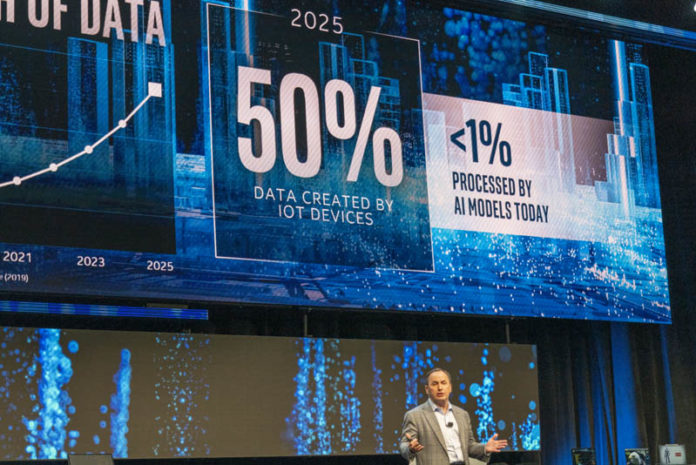Bob Swan, CEO of Intel, kicked off the company’s CES 2020 keynote talking about a theme we have heard for years: the growth of data. Instead of talking about it in a pure compute or storage context, the discussion hinged more on how all of the new data will be processed. His message kicking off the discussion was that by 2025 half of all data will be created by IoT devices, yet today less than 1% of the data is processed by AI models. Intel sees the opportunity in providing silicon to close the gap processing a higher percentage of the larger pool of data that will be generated in the future.
Intel at CES 2020 AI at the Edge Coming
Navin Shenoy EVP and VM of Intel’s Data Platforms Group led the first part of the discussion once the keynote was handed off. This was a very interesting decision since we were at CES and Gregory Bryant has most of the consumer portfolio at Intel. Navin mentioned that Intel sees this AI opportunity as a >$25 billion opportunity in 2024.

Navin was quick to point out that Intel puts its AI revenue at $3.5 billion. When Intel discusses this number, it is usually in the context of Intel Xeon CPUs, and potentially others, being partially included. The company has features like VNNI in the 2nd Gen Intel Xeon Scalable series and has started adding it in other segments such as with the Intel Xeon W-3275. Navin also mentioned that the NNP-I, the company’s AI inference platform, will be launching “later this quarter.”

There is a bit of reaching on this image since the Intel Xe graphics are not quite here yet, although the company later showed off a running Xe GPU in Gregory Bryant’s segment. See our Intel Xe HPC GPU is Something to Get Excited About article for more on this. We frankly need more of an explanation on how that $3.5 billion fits into $25 billion in four years. Is that calling all x86 CPUs AI chips since Intel is adding AI instructions? Does the opportunity include networking and Silicon Photonics? This was a keynote, so showing big numbers is important. Hopefully, Intel will provide more guidance as to how they think of that number. For STH, that would help inform where we need to expand content coverage as an example.
Conspicuously absent from the above image is the new $3 billion Habana Labs purchase. We were told that more will be coming from that acquisition in 2020. We think it was left off of the previous slide since it is not adding to 2019 Intel AI revenue.

Intel offered a number of case studies from creating freely directable views for sporting events, and the challenges bringing today’s views to life. The company also showed how it is helping athletes train better as a tie-in to the company’s 2020 Tokyo Olympics sponsorship.
One statistic given is that Intel says video currently is responsible for 80% of Internet traffic. That is likely to continue being a key driver of the network and AI devices since it is such a large figure. On that point, Intel noted its work with Netflix on the open-source AV1 CODEC. The companies claim over 60% better compression efficiency and we will start seeing it deployed later this year.
Final Words
This was CES 2020 so we were not expecting any major server news. Still, we wanted to point out from the keynote that Intel is fully embracing this notion of expanding its silicon addressable market even if it is at the expense of x86. One will note from above that Intel Xeon is one of four or one of five major product lines for Intel as it chases that TAM expansion.




